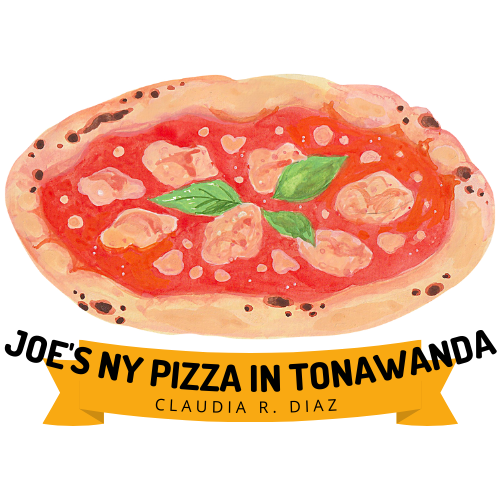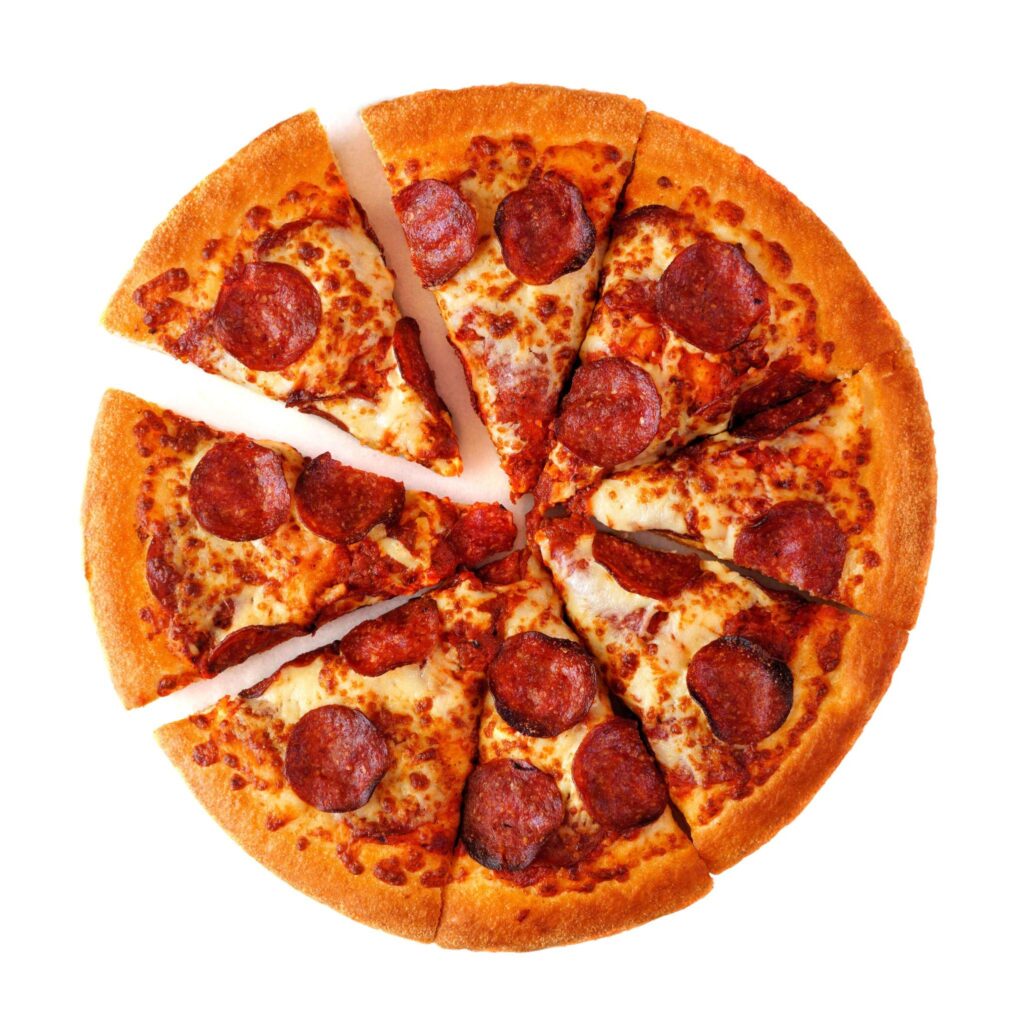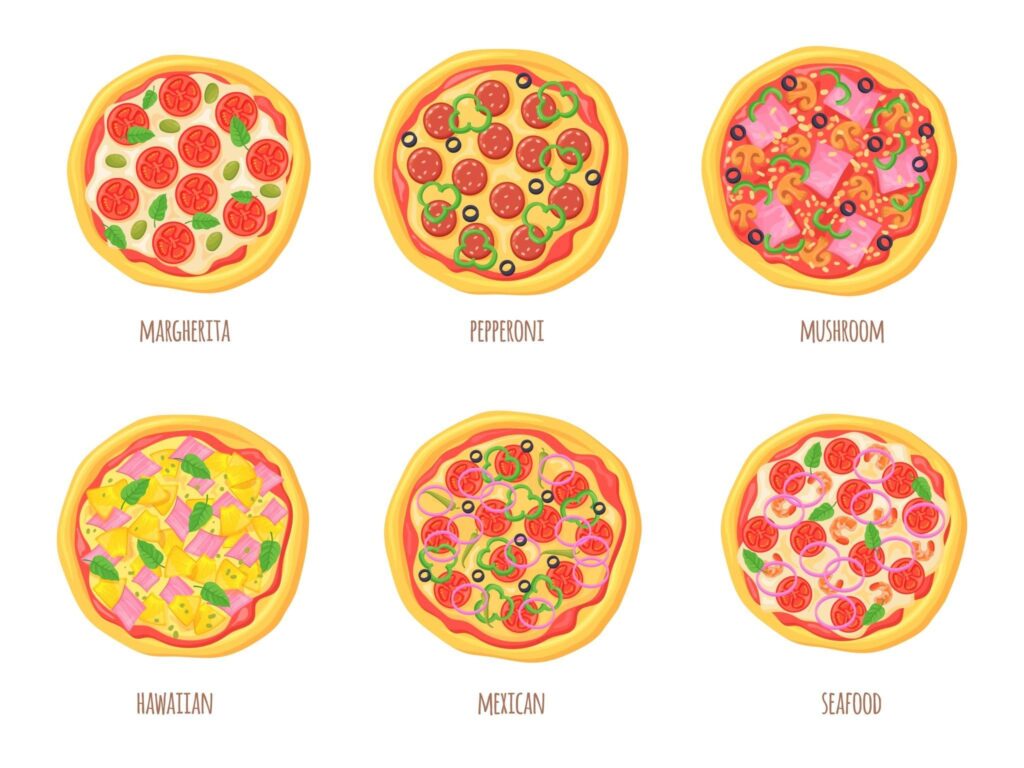Pizza has long been categorized as a “junk food” by many, but is it really? As a registered dietitian nutritionist, I have a different concept about foods overall instead of classifying them as good/bad/junk. Foods either provide a good source of nutrients or they don’t. And surprise! Pizza does have nutritional value. In fact, a basic cheese pizza contains at least three of the five nutrient-rich food groups. But before you dial for delivery, let’s dive deeper into the concept of healthy pizza and rethink our idea of what junk food really means.
Explanation Of The Concept Of Junk Food
Junk food is any food that is low in nutritional value and high in calories, fat, sugar, salt, and additives. Junk food includes the likes of candy, soda, chips, ice cream, and many others. These foods are often considered unhealthy and are associated with various health risks such as obesity, type 2 diabetes, heart disease, and high blood pressure.
Pizza is a popular food that is often categorized as junk food due to its high fat and sodium content. However, this perception of pizza is only partially accurate. While some types of pizza are high in salt, fat, and calories, others can actually be very healthy. Additionally, pizza has various nutritional components that make it a food worth considering in any balanced diet.
Factors such as the ingredients, toppings, preparation method, and portion size can all affect how healthy a pizza is. For example, making your pizza at home with a whole-grain crust, low-sodium tomato sauce, and plenty of vegetables can be a nutritious and fulfilling meal. In contrast, if you order a pizza with a thick, greasy crust loaded with fatty meats and extra cheese, it will have a much higher calorie, fat, and sodium content.
While it is true that pizza can be high in certain ingredients that are not great for your health, it is not accurate to classify it as a type of junk food. Instead, it is a food that can be part of a healthy diet if consumed in moderation and with the right ingredients. You can enjoy pizza without worrying about its impact on your health by making smarter choices regarding the ingredients, toppings, and preparation methods.
Defining Junk Food And Pizza
Junk food is a term used to describe foods high in calories, fat, and sugar and provide little nutritional value. These types of foods are often linked to weight gain, diabetes, heart disease, and other health problems. Pizza, on the other hand, is a food that is often classified as junk food due to its high calorie and fat content. But is pizza really junk food?
Pizza is a popular food made up of a crust, sauce, cheese, and toppings. It is often served hot and fresh, making it a favorite of many people worldwide. Interestingly, defining what counts as junk food can be tricky. While high in calories and fat, pizza also contains a range of nutrients such as carbohydrates, protein, and essential minerals like calcium.
On the one hand, pizza can be considered junk food due to its high saturated fat and sodium content. The cheese on pizza is often high in saturated fat, which increases the risk of heart disease and high cholesterol. Pizza is often high in sodium, leading to high blood pressure.
However, on the other hand, pizza can also be healthy depending on how it’s prepared. Making your own pizza at home with a whole-grain crust, low-sodium tomato sauce, and various vegetables can create a nutritious and satisfying meal. Furthermore, a study by the University of Campania Luigi Vanvitelli shows that slow-leavening pizza causes stable glycemic levels in children with type 1 diabetes.
In conclusion, while pizza can be high in calories, fat, and sodium, it doesn’t necessarily fall under the category of “junk food.” Defining what counts as junk food can be challenging, but consuming pizza in moderation is important, and opt for healthier preparations whenever possible.
The Nutritional Components Of Pizza
Pizza has often been categorized as junk food, but is it really that unhealthy? Here are some nutritional components of pizza that you should know about:
1. Carbohydrates: Pizza is mainly made of dough rich in carbohydrates. Carbs provide energy to the body and are also essential for brain function.
2. Protein: Cheese and meat toppings on pizza are protein sources that help build and repair body tissues.
3. Fiber: Vegetables like onions, peppers, and mushrooms used as toppings on pizza add fiber to the crust. Fiber helps regulate digestion and keep you feeling full.
4. Fat: Pizza contains fat, mainly from cheese and meat, with saturated and unsaturated fats. Saturated fat in cheese can increase cholesterol levels, while unsaturated fats in olive oil and avocado can lower cholesterol levels.
5. Sodium: Excessive salt can lead to high blood pressure and health complications. Pizza can be high in sodium, but you can control it by choosing low-sodium toppings and reducing the amount of cheese and meat.
Pizza can be part of a balanced diet if you consume it in moderation and make healthier choices. Opt for thin crusts, vegetables, and lean protein toppings, and limit the amount of cheese and saturated fats. Homemade pizza is also a great option as you can control the ingredients and make it healthier for you. So, go ahead and enjoy a slice or two of pizza without feeling guilty!
Why Pizza Does Not Fall Under The Category Of Junk Food?
Pizza has often been labeled as junk food, but it does not fall into that category because of several nutritional components. Here are some reasons why pizza does not deserve to be called unhealthy junk food:
- It contains carbohydrates, proteins, vitamins, and fats that are essential for the body. A typical pizza serving contains around 300 grams of calories, which is a little different from other fast-food items.
- Pizza can be customized to suit various dietary needs. For example, opting for a whole-grain thin crust and adding plenty of vegetables can make it a healthier meal option.
- It is a complete food and part of the Mediterranean diet, which is known for its benefits for heart health.
- Pizza contains calcium from cheese, which is beneficial for bone health.
- The dough used in pizza can be made with slow fermentation, which helps to regulate blood sugar levels, making it a suitable meal for people with diabetes.
- Pizza consumption can be moderated by practicing portion control. The size and number of portions consumed should be controlled, especially when ordering from outside.
Pizza has received an unjust reputation as junk food. When consumed in moderation and with healthy toppings, it can be a part of a balanced diet. Homemade pizza is also a good option as it allows for control over the ingredients and their quantities.
How Pizza Can Fit Into A Balanced Diet?
Pizza is definitely one of the most beloved foods across the globe. However, it’s also known for being high in fat, sodium, and calories, making it categorized as junk food by some health experts. But the truth is, pizza can still fit into a balanced diet if consumed in moderation and prepared correctly. Here are some tips for enjoying pizza healthily and mindfully:
- Choose a whole-grain crust to increase the fiber content and make it more satisfying.
- Opt for a tomato-based sauce instead of creamy sauces or heavy meat-based sauces.
- Load up on veggies as toppings to boost the nutrition and add flavor.
- Use lean protein options like chicken, turkey, or plant-based substitutes instead of fatty meats like sausage or pepperoni.
- Cut down on cheese and choose low-fat options.
- Practice portion control and aim for a smaller pizza serving, a side salad, or some fruit.
- Enjoy homemade pizza as it gives you more control over the ingredients and toppings used.
Pizza can become a part of a healthy and balanced diet by following these tips. It’s okay to indulge in a slice occasionally, but it’s important to be mindful of the ingredients and portion sizes. With the right preparation and choices, pizza can be enjoyed guilt-free as a delicious and satisfying meal.
The Role Of Portion Control When Consuming Pizza
Pizza is a popular food option loved by many, but its perceived unhealthy status leaves many individuals questioning if it is junk food. The nutritional value of pizza depends on several factors, including the ingredients and portion size. Portion control plays a significant role in maintaining a healthy pizza diet. Here are some valuable facts to note:
- Pizza toppings play a massive role in the calorie and nutrient content. For instance, adding vegetables such as spinach, peppers, and mushrooms offers vital vitamins and minerals. On the other hand, adding meats like sausage and pepperoni increases the calories and fats in your pizza slice.
- Proper portion size ensures that you get the necessary nutrients and avoid overeating. It recommended having a maximum of two standard slices per meal. If you want to have more, choose a thinner-crust pizza with vegetable toppings.
- Ordering one large pizza for a small gathering instead of several medium ones is a practical way to monitor the portion size. Packaging the leftovers in individual portions for easy reheat and serving is also best.
- Cooking your pizza from scratch offers the flexibility to control the ingredients and the portion size. Use whole-grain thin crust and add low-fat cheese, vegetables, and sauce with less sodium.
Pizza is not junk food if consumed in moderation. Practicing portion control and choosing healthier toppings and crusts ensure a balanced diet. Homemade pizza is the best option as it offers ingredients and portion size flexibility. It is up to the individual to ensure that they consume pizza responsibly to maintain a healthy diet.
The Impact Of Toppings And Preparation Methods
The impact of toppings and preparation methods is crucial in determining whether pizza is considered junk food. Here are some key points to consider:
- Toppings: The choices you make for toppings can significantly impact the nutritional value of pizza. Opting for fresh vegetables like onions, peppers, and mushrooms can boost the fiber and vitamin content, while adding healthy fats like olives and nuts can provide additional nutrition. On the other hand, choosing high-fat meats like sausage and pepperoni can increase the saturated fat and calorie count.
- Preparation methods: How pizza is prepared can also impact its nutritional value. Deep-fried and stuffed crusts can increase the calorie and fat count, while thin-crust pizzas are typically lower in calories and fat. Additionally, using a tomato-based sauce instead of a creamy one can provide more nutrients with fewer calories.
- Homemade pizza: Making your own pizza at home gives you more control over the toppings and preparation methods, making it a healthier option. You can use ingredients like whole-grain flour, low-fat cheese, and plenty of veggies to boost its nutritional value.
- Moderation: No matter the toppings or preparation methods, portion control is vital to ensuring that pizza remains a part of a balanced diet. Eating pizza in moderation and balancing it with plenty of whole grains, fruits, and vegetables can make it a healthier option.
Overall, pizza can be a part of a balanced diet if it is prepared and consumed in the right way. Pizza can be a delicious and nutritious meal option by making thoughtful choices about toppings and preparation methods and practicing moderation.
Risks Associated With Pizza Consumption
Pizza is a popular food choice for many people, but it is important to be aware of the risks associated with consuming it. Here are some risks you should consider before indulging in a slice:
1. High Saturated Fat Content: The cheese and meat toppings on pizza contain high levels of saturated fat. This can increase your risk for high cholesterol and heart disease.
2. High Sodium Content: Pizza contains high sodium, which can increase your risk for high blood pressure. Consuming too much sodium could also lead to other health problems.
3. Processed Ingredients: Pizza is mainly composed of processed ingredients which can lead to weight gain and sluggishness as your body has to work harder to metabolize them.
4. Associated with Unhealthy Eating Habits: Studies have shown that consuming pizza is linked to consuming more food high in saturated fats and sodium, leading to unhealthy eating habits and weight gain.
5. Can Lead to Heart Disease: Processed meats like pepperoni and sausage, which are commonly used as toppings, have been linked to obesity, some cancers, and heart disease.
While pizza may have risks, there are ways to enjoy this food while keeping your health in mind. Make your own pizza with a whole-grain crust, low-sodium tomato sauce, and plenty of fresh vegetables. It is also important to practice portion control when consuming pizza and limit how often you indulge in this treat.
Benefits Of Homemade Pizza
Homemade pizza is not only delicious but also surprisingly healthy! Here are some of the benefits of making your own pizza at home:
1. Healthier crust options: You have control over the crust when making pizza at home. Opt for a thin crust made with whole-grain flour for a lower-carb option. Alternatively, try a cauliflower or zucchini crust for a gluten-free, veggie-packed base.
2. Tomato-based sauce: Tomatoes are a superfood packed with vitamins and antioxidants. The homemade tomato-based sauce is a healthier option than store-bought, which can be high in sugar and preservatives.
3. Toppings galore: Homemade pizza allows for endless topping options! Load up on veggies like bell peppers, mushrooms, or spinach for added fiber and nutrients. Choose lean protein toppings like grilled chicken or shrimp for added protein without excess calories.
4. Control over cheese: Cheese can be high in saturated fat. When making your own pizza, you can control how much and what type of cheese you use. Opt for lower-fat options like part-skim mozzarella or try a plant-based cheese alternative to keep it vegan.
5. Portion control: Homemade pizza allows for portion control. Make a personal-sized pizza or cut a larger pizza into smaller slices to keep your portions in check.
The benefits of homemade pizza go beyond just satisfying your taste buds, making it a healthy and enjoyable meal option.
FAQs
Q: What is junk food?
A: Junk food is food that is high in calories but low in nutritional value. Some examples include candy, soda, fast food, and fried foods.
Q: Is pizza considered junk food?
A: Many people consider pizza to be junk food, but it depends on the ingredients and how it is prepared. A pizza made with whole-grain crust and topped with vegetables and low-fat cheese can be a healthy option.
Q: What are the risks of consuming too much pizza?
A: Consuming too much pizza can lead to weight gain, high cholesterol, and an increased risk of heart disease. Adding meat and extra cheese to pizza can also increase the saturated fat content and sodium levels.
Q: Can homemade pizza be a healthier option?
A: Yes! Making your own pizza allows you to choose healthier ingredients and control portion sizes. Opt for whole-grain crust, low-sodium tomato sauce, and plenty of veggies.
Q: What is the role of portion control when consuming pizza?
A: Portion control is important when consuming pizza to avoid overeating and consuming excess calories. Please stick to one or two slices and balance it out with healthier sides.
Pizza can be a part of a balanced diet when consumed in moderation and with healthy toppings. Opt for homemade pizza and choose whole-grain crust and plenty of veggies. Remember to practice portion control and balance it out with healthier sides.
Conclusion
Pizza does not necessarily fall under the category of junk food. While certain types of pizza can be high in fat, sodium, and calories, homemade or healthy pizza options can actually be a delicious and nutritious part of a balanced diet. Here are the key takeaways:
- Pizza can be unhealthy due to its high levels of saturated fat, salt, and refined carbs.
- However, by choosing healthier toppings and preparation methods, pizza can also be a nutritious and satisfying option.
- Homemade pizza can be a great way to control the ingredients and make a healthier version of your favorite dish.
- Opt for a whole-grain crust, tomato-based sauce, and plenty of vegetables to add fiber, vitamins, and nutrients to your pizza.
- Pay attention to portion control and avoid overloading your pizza with high-fat meats and excessive amounts of cheese.
- While it’s important to be mindful of the potential risks associated with pizza consumption, enjoying pizza as part of a healthy and balanced diet is possible.
All in all, the concept of whether pizza is “junk food” or not ultimately depends on the types of ingredients and preparation methods used. By making informed choices and being mindful of portion control, you can still enjoy a delicious slice of pizza without compromising your health goals.

Looking for delicious pizza and authentic Italian cuisine? Look no further than Claudia R. Diaz at Joe’s NY Pizza in Tonawanda! Our menu features a wide variety of classic dishes and innovative creations, all made with the freshest ingredients and prepared with the utmost care. Whether you’re in the mood for a traditional Margherita pizza or something a little more adventurous, like our Buffalo chicken pizza or shrimp scampi pasta, Claudia R. Diaz has something to satisfy every craving. So why wait? Visit us today and experience the best Italian food in Tonawanda! #ClaudiaRDiaz #JoesNYPizzaTonawanda #ItalianFood #PizzaLovers #FoodiesUnite


